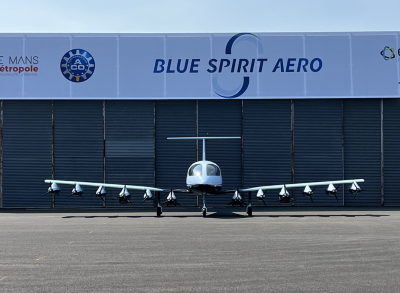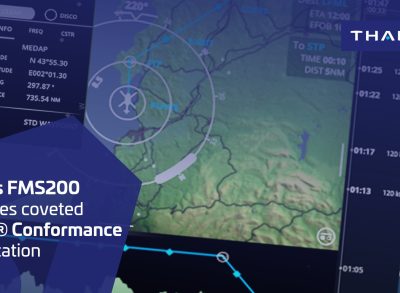Last month I attended the Paris Air Show and saw at first hand many of the new technologies that will be improving the air passenger experience – and if you’re a seasoned traveler I’m sure you’ll agree it needs improving. Anyone who has been to an airport recently will be all-too familiar with the experience – long queues, lengthy security processes, unpredictability and, inevitably, stress. With vacation season upon us, this scenario will be especially relatable to millions of people in the coming weeks.
Now imagine making the same journey but with twice as many passengers in the airport around you. It’s a stress-inducing thought, but one that’s closer to reality than you might think. According to predictions from the International Air Transport Association (IATA), the volume of annual air passengers is expected to reach 7.8 billion by 2036 – almost double the four billion who traveled in 2017. Many airports are expanding or being redeveloped to help manage a greater number of people, but despite their efforts it’s simply going to be impossible for airports to double their physical capacity and staff numbers in that time.
So, the challenge facing airport heads is clear. Unless airports find a new way to work, the experience is set to get exponentially worse – with knock-on effects for all stakeholders, passengers, airlines and on-site retailers alike. And it’s not just a question of capacity. Airports also have to shoulder the burden of maintaining strict security requirements, while adapting to new and emerging threats. At the same time, higher levels of air traffic and consumer demand means that airports and airlines are also conscious of delivering improved customer satisfaction to gain a competitive edge in this increasingly sharp-elbowed market.
As a key player in the aerospace sector, Thales is also well aware that the carbon footprint of all these new air travelers could have a massive impact. This is why we’re working on new technologies to improve efficiency such as the next generation of air traffic management systems that permanently optimize aircraft trajectory to reduce flight duration and fuel consumption.
The wider digitisation of the sector is improving in step with the volume of air passengers, helping to account for this growth in the number of travelers while ensuring that no compromises are made to necessary security requirements.
An improved journey
Historically, the passenger journey through the airport has felt stuttered and disjointed as travelers invariably find themselves held up at a series of bottlenecks where human checks were a necessity. Developments in biometric technology are helping to ease these pain points by enabling Automated Border Control (ABC), especially over busier getaway periods.
Further leaps forward in technology are helping to create a fully self-service home-to-destination experience powered by biometrics. The concept itself is relatively simple; passengers authenticate themselves once and for all – either on their mobile device or tablet before departure – or at a self-service kiosk or desk at the terminal upon arrival at the airport. After that, there is no need for a passport or a boarding pass with the passenger’s facial biometry validating all the successive steps. This will be enabled by cameras at bag drop, security check points and boarding gates, slashing processing times by 80%.
The latest end-to-end airport solutions can even keep track of passenger preferences (opt-in of course!), offering personalized recommendations to travelers – such as keeping track of in-flight entertainment choices, allowing passengers to even pick up films at the exact time they left off on them on previous connecting flights.
As well as facilitating a more seamless journey, this sea change in airport tech is also helping to improve security checks by eliminating the threat of lookalike fraud and use of multiple identities. Border agencies are already using biometric recognition to quickly establish if the passenger holding the ID doc is who they claim to be and if the latter is not attempting to cross a border using different identities
Of course, the big barrier to widespread adoption of these innovations is passenger comfort with these new technologies. They must be easy to use and convenient, but also passengers need to be convinced that their data is safe. With concerns around facial technology continuing to grow, it must be very clear how this data is collected and what must be done with it. Importantly, under the strict European Directive on the protection of biometric data, this means that data is deleted as soon as the flight departs, or on the return flight, and that it will not be used for other purposes.
The mutual benefit of improving these services for airports and passengers is clear; travelers spend less time twiddling their thumbs in snaking queues and more time enjoying duty-free retail outlets, restaurants and bars on the airside. With passenger-related spending accounting for over 40% of revenues and up to 80% of profits at some of the largest hubs, the radiant benefits of having travelers spend more time in duty-free is also clear for airports too.
The airport of tomorrow
These futuristic and frictionless airports aren’t just some distant dream. Biometric technology is already a reality in a number of international hubs with SITA reporting that three quarters of airports have already made big investments in this space. ABC gates, enabling passengers with ePassports to pass through border control without the direct intervention of a human, will already be a familiar sight to millions of travelers - 72% of passengers used self-service check-in in 2018, and this is just the tip of the iceberg.
Some airports, such as Los Angeles International (LAX), are already trialing non-invasive solutions such as boarding using facial recognition to make the implementation of this technology as seamless as possible. Our Gemalto Fly to Gate technology also currently enables the use of digital identity tokens, authenticating a passenger’s journey all the way through the terminal to create a fully self-serviced journey.
The quick rollout of this tech to hubs across the world is somewhat stymied by the fact that airports are inherently complex ecosystems, hosting many different parties and processes from check-in to boarding. For these new biometric systems to be effectively rolled out, collaboration between all these various stakeholders is essential. If that can be achieved then the airport experience will be more convenient and, crucially, more secure for all.
As we saw on the Thales stand at the Paris Air Show, the potential for biometrics and big data to revolutionize the airport experience is massive. As passenger numbers boom, predictive analytics of the flow of people around the airport and at certain security and immigration bottlenecks allows the airport to allocate their resources more intelligently. And, by integrating our facial recognition technology into airport security systems, the authorities will be able to efficiently identify not just the bad guys but also the distracted passenger who’s late to board and holding up your flight!





